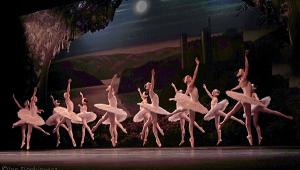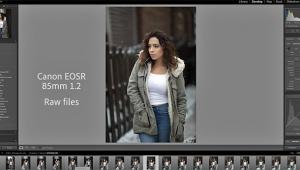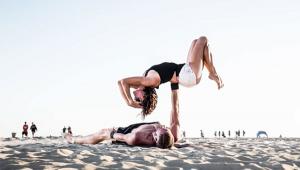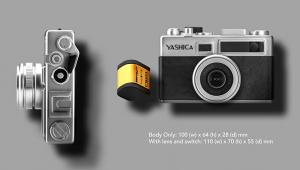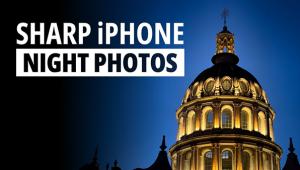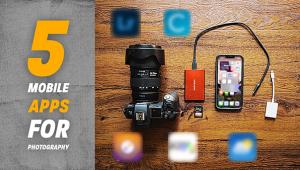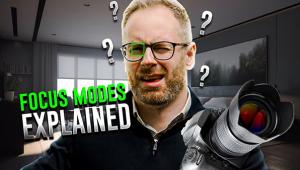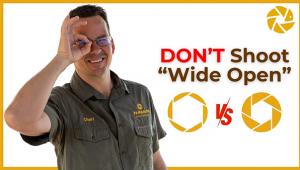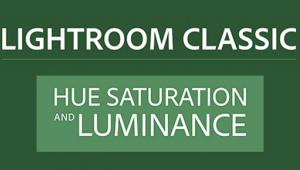I read a year or two ago that every day, people take more photos than were ever taken with film. If you think that's a bad thing, I guess these are good points.
10 Ways Real Cameras Are MUCH Better for Photography Than Smartphones
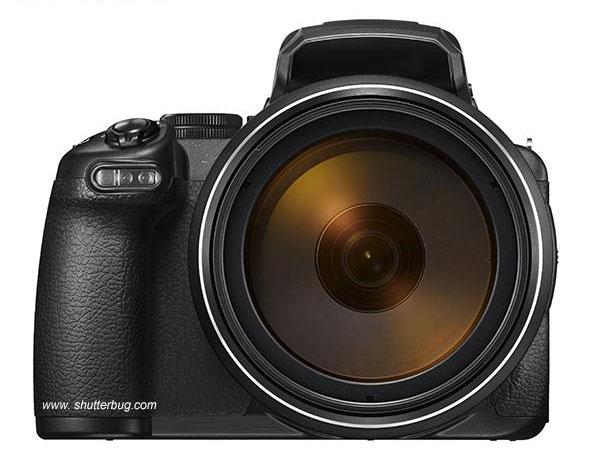
A smartphone is, in a way, the gateway drug that can lead to a lifelong addiction to photography. For millions of aspiring photographers, these multi-purpose devices are their first introduction to image-making and many smartphone users eventually get hooked on the craft.
Soon enough, they will want to take better pictures. But using a smartphone is NOT the way to go. Trust me.
If you are one of these photographers stuck on awkwardly using your smartphone to shoot mediocre photos, here are ten reasons why moving up to a “real” camera will not only improve your photographs, it will literally open your eyes to a whole world of picture taking.
1. Getting a Grip
A big reason to switch to real cameras is that they handle better than phones. Real cameras have better ergonomics; it's that simple. A real camera fits snuggly in your hands. Your right hand holds the body and your pointer finger rests naturally on the shutter button. With your left hand, you grip the camera lens and nestle the body in your palm. The camera is stable and balanced in your hands and you feel that you are connected to it. It's almost…natural. This makes everything from wedding photography to street photography faster, easier and more enjoyable.
Compared to a real camera, a flat glassy phone is hard to handle and slower to use.

2. Better Image Stabilization
Another reason to step up to real cameras is that they have better image stabilization (IS) systems. IS helps you get sharp photos at slow shutter speeds. Since phones are lighter and have less mass, their image stabilizers have to work harder than those in a traditional camera or lens. A good camera and lens combo has weight and mass, and when held in two hands as described above, I can get sharp photos hand held right down to about 1/8 second.
My phone takes decent images down to 1/30 second but even in normal room light I get nagging complaint messages that say "use a higher ISO" or "use the flash" or "hold the phone more firmly" and this is annoying and delays my shooting.
To show what I mean by the difference between the two, I decided to photograph some coins on my desk with my phone and a camera. Both devices were set to “Auto”. The camera took photos at f/5.6 at 1/8 second while the phone used f/2.1 at 1/160 of a second. Comparing the results, it is clear that the camera shot is much sharper than the phone shot.

3. Compactness vs Purpose
Phones are about staying in touch with friends and family and, originally, cameras in phones were a marketing afterthought.
Some people complain that they don’t like cameras because they aren’t as compact as phones and you can’t slip them into a pants pocket. But that’s not important to me because when I carry a camera I have the intention of taking pictures. I focus on doing that and not chatting with friends. (If you want to see a photographer who focuses intensely on taking pictures, see the image of the gal below.)
I still carry my phone just in case my wife wants to tell me to get something at the store. Phones are good for calls, cameras are good for photography.

4. Bigger Sensors Work Better in Low Light and Produce Better Tonality
Cameras have much larger sensors than phones. That means the 24 million pixels on a large camera sensor have lots more room to gather light than the 24MP crammed onto a phone sensor. This allows the camera sensor to work better in low light and produce better overall tonality in your pictures. And while it's true that phone sensors have become much better recently, the sensor technology in real cameras has improved dramatically as well, thus keeping the cameras ahead in image quality.
In the chart below, the smallest, 1/2.5-inch green box represents phone sensor sizes, while everything above it are true camera sensor sizes. It’s quite a difference.

5. True Primes and Zooms Are Better Lenses
The tiny fixed wide-angle lenses on phones are a big problem for me and another good reason to move to a real camera. These mini-lenses in phones are basically good for snap shooting, but they are no match for a real camera prime or zoom lens. Their optics are the result of years of lens design and they contain multiple superb multi-coated glass elements. There really is no comparison between true camera lenses and the tiny bits of glass and/or plastic in a phone.

6. Can’t Beat the Reach
Cameras beat phones by a wide margin when it comes to nature and sports photography. How many times have you looked at your phone shots and wished you could have been closer to an eagle or a quarterback? That’s the job of a camera telephoto lens to reach out and put you in the heart of the action. Whether it’s getting up close to a runner or nose to nose with a polar bear, telephotos do what a phone simply cannot.
Take, for example, the photo of cowboys in the Camargue region of France rounding up a young bull for branding. I was shooting from a safe position about 350 feet from them but my long 600mm telephoto lens got me right up to the action.

7. A Slice of Life
Besides bringing distant subjects closer, telephoto lenses will produce a shallow depth of field when used at their widest apertures. This effect isolates subjects from their surroundings. The photo below was shot with my telephoto set to its widest aperture (f2.8). I focused on the actress and the shallow depth of field kept the actress in sharp focus while the actor next to her was blurred.

8. More Versatile LCD Screens
In a recent Shutterbug article, I wrote about LCD monitor screens and they are another reason real cameras are better than phones.
Lots of cameras have LCD screens that can tilt away from the body and in some cases be rotated though a full 360 degrees. This lets you shoot over the heads in a crowd or down low for close-up of flowers.
Rotatable screens can also give a photo an interesting perspective. For my portrait of an artist at an exhibit I held the camera over my head and tilted the screen, so I could see what I was shooting before I took the shot.

9. Hordes of More and Better Accessories and Filters
There are thousands of accessories for real cameras that can expand and enhance your picture taking experience. There are handheld flashes, auxiliary lenses and hundreds of special effects filters that screw right into a real camera lens. One amazing new filter just announced by the Hoya Company is called a “Starscape” filter and it cuts down light pollution for better star photos.
When it comes to stars, I made a few of my own using a “starburst” filter for this photo of my friend the singer “Toons.”

10. Three Legs are Better Than Two
Real cameras have tripod sockets while phones do not. You can buy a clamp or grip for a phone that has a tripod socket but that makes the phone big and clumsy.
With a real camera on a tripod, you can shoot at small apertures to get a very big depth of field and you can also shoot at long exposures of several seconds to blur motion. That beats the capability of both phone and camera stabilization programs by a country mile.
And don't be surprised that once you start getting better photographs with a real camera you discover that photography is really a worthwhile and pleasurable habit to have.

- Log in or register to post comments



